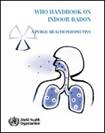Difference between revisions of "Measuring and Reducing Radon Levels in your Home"
icrpaedia>Carr |
m (1 revision imported) |
(No difference)
| |
Latest revision as of 17:24, 5 March 2019
Measuring radon in your home is easy
You can find a radon test kit at a local hardware store or online. Radon levels are different in different parts of your home, so put the small device in a room where people spend a lot of time. When the measurement is done, mail it back to the supplier, and they will send you the results. The cost should be no more than the equivalent of a few tens of dollars or Euros. You can also hire a professional.
A long-term measurement is preferred, ideally for three months or more. Radon levels change during the day and from season to season, making shorter measurements less reliable.
The level of radon in your home should be compared to your national reference level, usually set somewhere in the range 100 to 300 Bq/m3.
From the WHO Factsheet on Indoor Radon:
“Well-tested, durable and cost-efficient methods exist for preventing radon in new houses and reducing radon in existing dwellings.”
“Radon levels in existing homes can be reduced by:
- increasing under-floor ventilation;
- installing a radon sump system in the basement or under a solid floor;
- avoiding the passage of radon from the basement into living rooms;
- sealing floors and walls; and
- improving the ventilation of the house.”
Hiring a professional to reduce radon levels in your home will normally cost the equivalent of several hundred dollars or Euros, or more.
Find out more about how radon enters your home.



